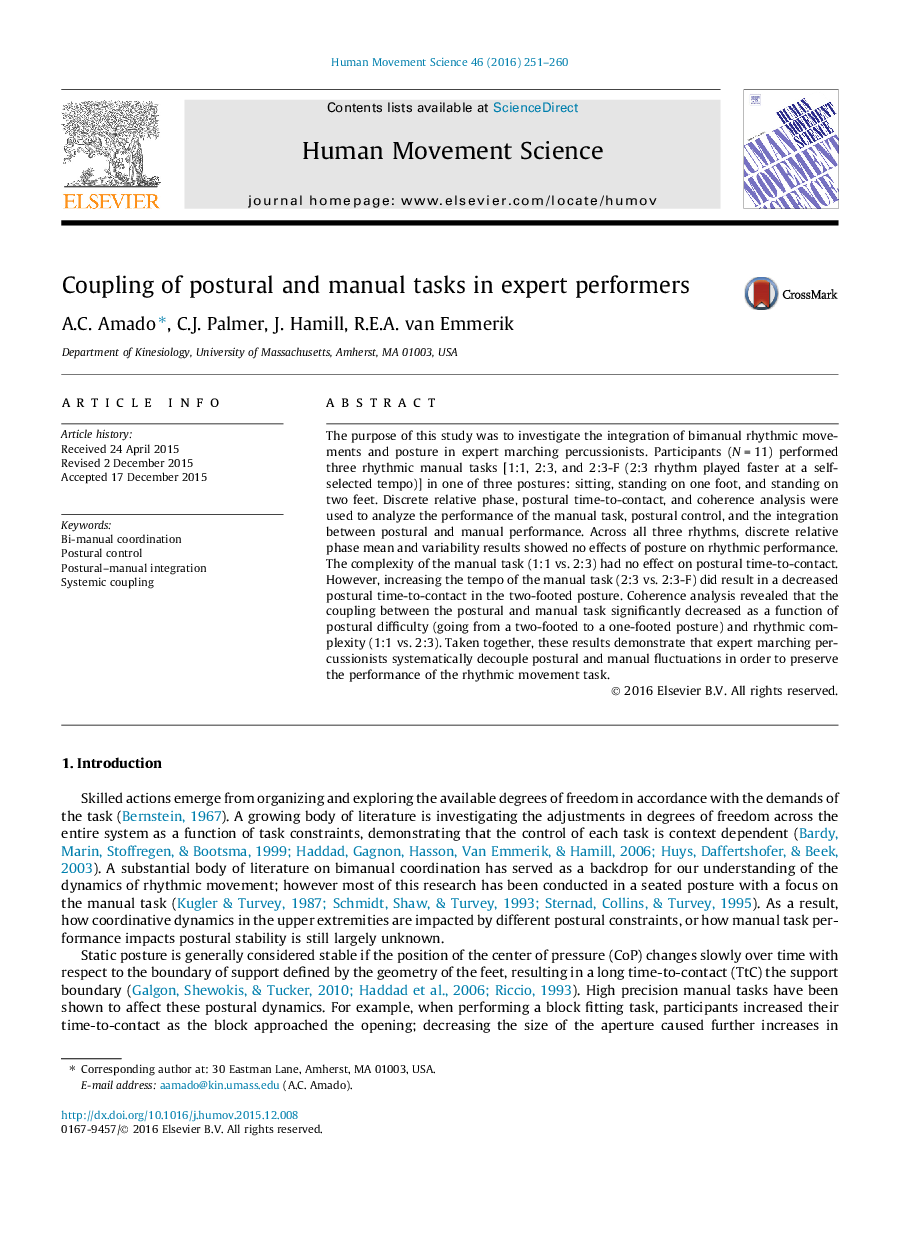| کد مقاله | کد نشریه | سال انتشار | مقاله انگلیسی | نسخه تمام متن |
|---|---|---|---|---|
| 928223 | 1474219 | 2016 | 10 صفحه PDF | دانلود رایگان |
• Postural configuration did not affect bimanual coordination.
• Manual task complexity did not impact postural fluctuations, but tempo did.
• Postural–manual coupling decreased as a function of postural and rhythmic constraints.
• In adapting to task constraints postural and manual control become loosely coupled.
The purpose of this study was to investigate the integration of bimanual rhythmic movements and posture in expert marching percussionists. Participants (N = 11) performed three rhythmic manual tasks [1:1, 2:3, and 2:3-F (2:3 rhythm played faster at a self-selected tempo)] in one of three postures: sitting, standing on one foot, and standing on two feet. Discrete relative phase, postural time-to-contact, and coherence analysis were used to analyze the performance of the manual task, postural control, and the integration between postural and manual performance. Across all three rhythms, discrete relative phase mean and variability results showed no effects of posture on rhythmic performance. The complexity of the manual task (1:1 vs. 2:3) had no effect on postural time-to-contact. However, increasing the tempo of the manual task (2:3 vs. 2:3-F) did result in a decreased postural time-to-contact in the two-footed posture. Coherence analysis revealed that the coupling between the postural and manual task significantly decreased as a function of postural difficulty (going from a two-footed to a one-footed posture) and rhythmic complexity (1:1 vs. 2:3). Taken together, these results demonstrate that expert marching percussionists systematically decouple postural and manual fluctuations in order to preserve the performance of the rhythmic movement task.
Journal: Human Movement Science - Volume 46, April 2016, Pages 251–260
